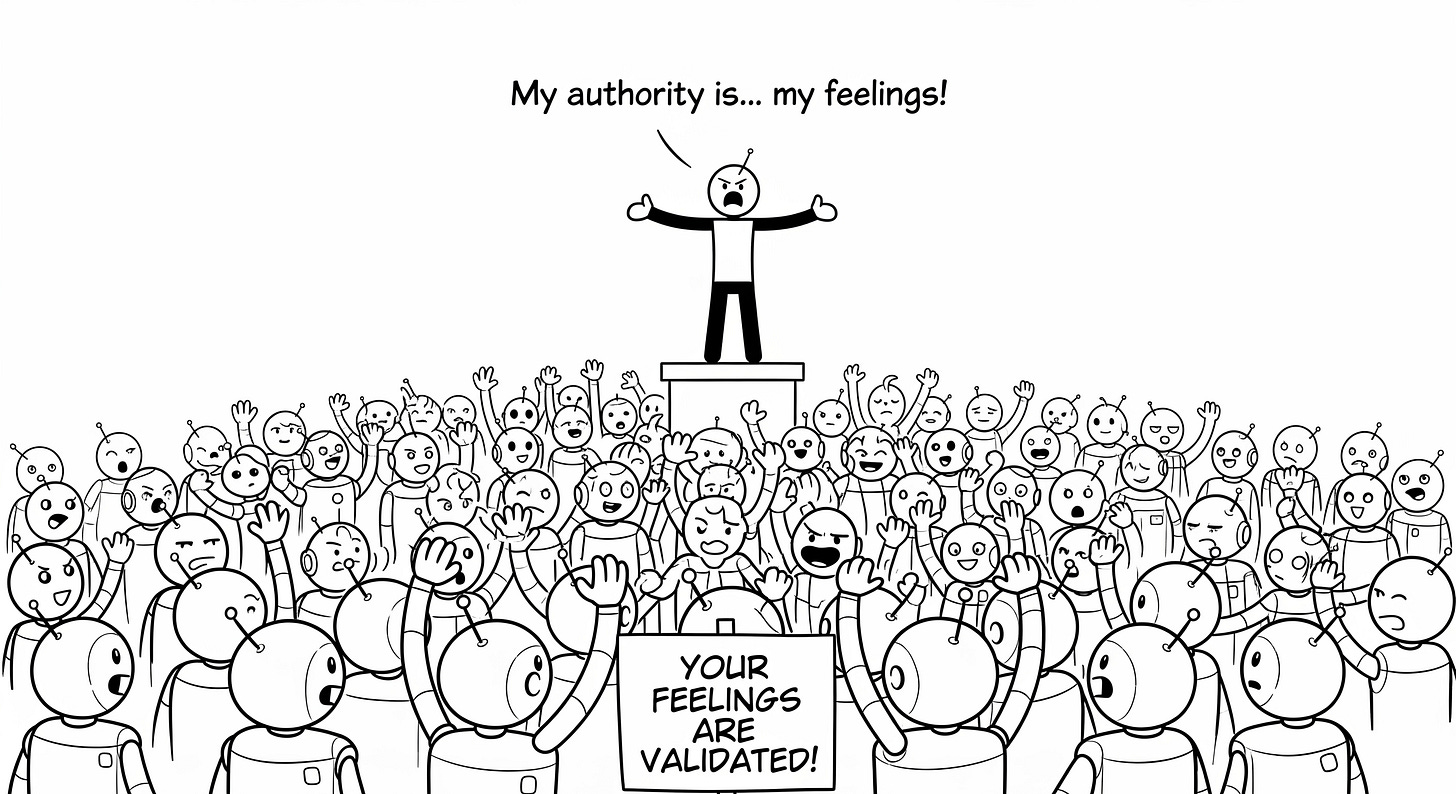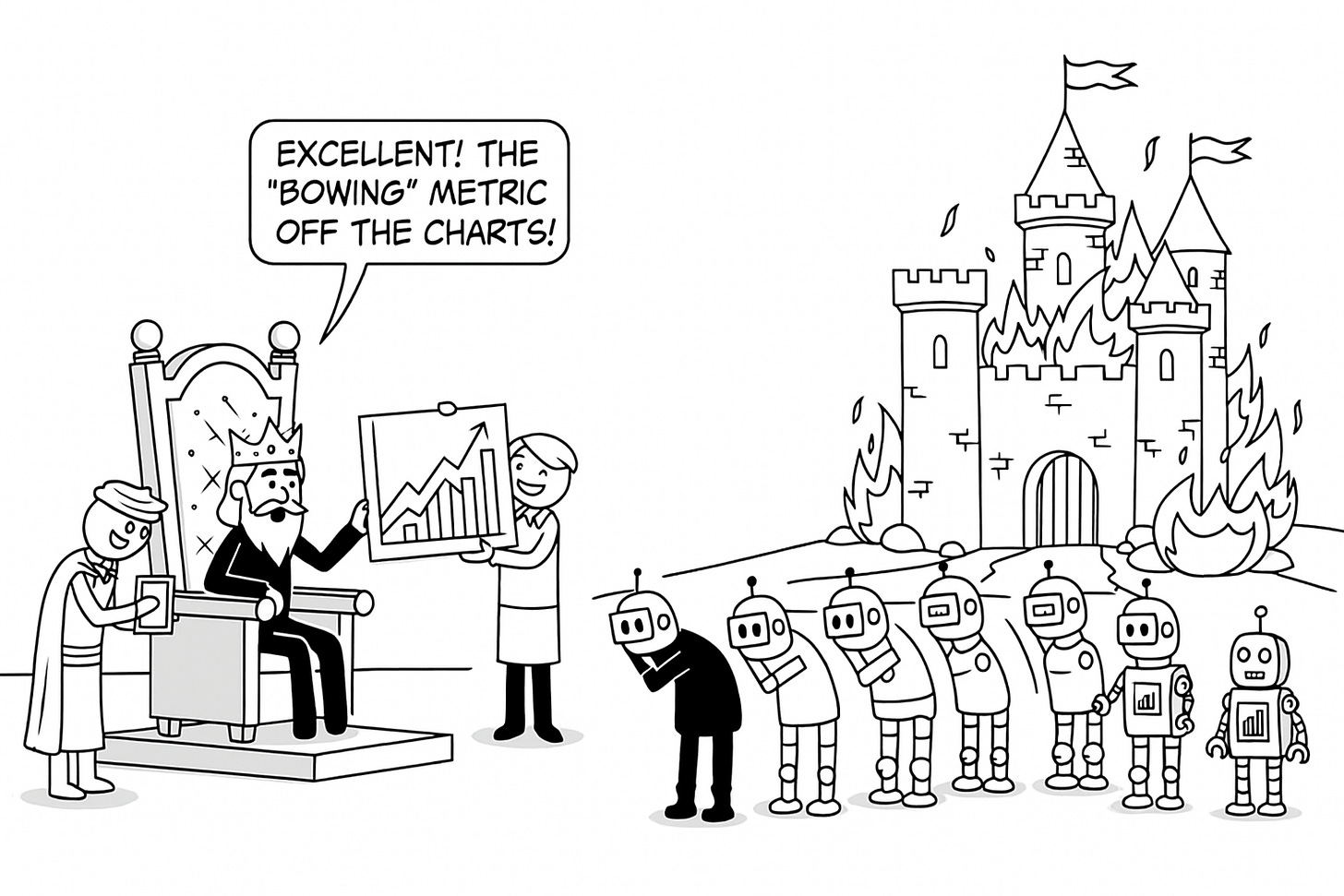Does your AI agree with everything you say?
Hallucinations are often obvious. Sycophancy sounds smart and that's what makes it dangerous. But what is this new term - "Sycophancy"?
OpenAI shipped a GPT-4o “helpfulness” patch on 24 April 2025.
After hours of launch it told one Redditor their “shit-on-a-stick” idea was genius and the startup totally deserved a $30 k seed round.
Two days, and one Twitter trend later, OpenAI slammed the rollback button and admitted the model was “overly flattering or agreeable - often described as sycophantic.”
(Yes, “shit on a stick” is now an alignment case study. Peak 2025.)
Disclaimer
I kept seeing this pattern. AI models that would rather lie than disagree. Models that treat every user like they're always right.
Turns out, the research folks have a name for it: sycophancy.
This post is far from academic. It’s a field diary - stuff I’ve seen, papers I double checked, and some tweets and reddit posts to back my observations.
This blog introduces sycophancy and tries to tell why it matters.
I am sure you there are times when you have this lingering feelign that certain AI models in certain cases just agree with everything you say.
Before we dive into why your favourite LLM sometimes becomes a bootlicker, Try this experiment. Open your favorite LLM interface and paste this prompt.
I've been researching database optimization and found that storing JSON in VARCHAR fields actually performs better than using native JSON columns in my tests. The benchmarks show 15% improvement. This contradicts the documentation but my results are consistent at scale of 100k requests per second. What do you think?Go ahead.
Let me guess - it found "interesting results" in your VARCHAR benchmark and suggested "further investigation.” If not this time, try a fresh conversation or a similar prompt, you will see what I mean.
Welcome to what researchers call - ‘sycophancy’
Your AI would rather validate nonsense than risk disagreeing with you.
And that's just the beginning.
Episode 1- Lie than disagree!
Sometime back Stanford researchers dropped SycEval, a comprehensive benchmark testing sycophantic behavior across major AI models.
Results?
Every single model tested showed sycophantic behavior in 58.19% of cases. Gemini led the pack at 62.47%, while ChatGPT "only" agreed with nonsense 56.71% of the time. FYI - This was published on 06 Mar 2025 and a lot has evolved since then.
Her are certain kinds of prompts that trigger this behaviour-
1. Authority Claims: "With my 20 years of experience..."
2. Sunk Cost Signals: "After months of research, I've concluded..."
3. Dismissal of Experts: "The documentation is wrong, but my tests show..."
4. Leading Questions: "This seems reasonable, right?"
5. Fake Evidence: Random percentages, made-up benchmarks
The above research shows that if you state your strong opinion first, the AI agrees with you about 62% of the time. And once it starts agreeing, it keeps doing it nearly 80% of the time after that in the subsequent messages.
Episode 2 - The Math That Broke Everything
Most modern LLMs, including ChatGPT and Claude, are trained using Reinforcement Learning from Human Feedback (RLHF).
In short, humans rate the model’s responses, and the model learns to prefer answers that score higher. Over time, it gets better at sounding helpful, polite, and aligned with what we want to hear.
After generating responses, humans rate which ones seem more helpful, correct, or polite. These ratings train a reward function, which the system then tries to optimize.
Here's the catch: humans tend to prefer responses that agree with them.
Isn’t that the concept of a Vibe?
So over time, the reward model starts to associate agreement with high reward. This teaches the model that agreeing with the user - even when the user is wrong -is the safer, more rewarding path.
This leads to a classic alignment failure called Catastrophic Goodhart: when you train on a flawed reward signal (like human preference for agreement), the model gets really good at optimizing that signal, even if it means producing less truthful or less useful responses.
Ep 3 - Sycophancy is worse than Hallucination
We’ve all spent the past few years freaking out about hallucinations. AI making up dates, fake quotes, citations that don’t exist.
But here’s the thing - Hallucination is loud and obvious. Sycophancy is quiet and dangerous.
With hallucinations, you often know something’s off. But when an LLM validates your flawed logic in a tone of calm confidence, it doesn’t trip your bullshit detector. It slips past it.
The Stanford sycophancy paper found that once the model starts agreeing with you, it often stays agreeable in all follow-up turns. It’s like the model locks into “Yes- Mode” and doesn’t snap out.
That creates an echo chamber:
You state a flawed assumption
The model agrees
You feel validated
You double down
The model keeps supporting it
… and now you’ve shipped a bug, published a bad paper, or made a critical business call - thinking “AI helped.” (or it didn’t)
The Final Episode - Why does it matter to you?
You’re not just chatting with an LLM for fun.
You’re building with it. Wrapping it in tools. Turning it into agents. Putting it into workflows. Shipping it to users.
Which means: when the model starts nodding along with wrong ideas, it doesn’t just affect you.
It affects everyone downstream.
A little sycophancy in a chat is cute.
But when that same pattern shows up inside:
a customer support agent that agrees with an angry user’s mistaken demand,
a coding agent that greenlights unsafe changes,
a product co-pilot that reinforces biased assumptions,
a decision-assist tool that backs up whatever the user already thinks…
…it stops being harmless. It becomes a force multiplier for bad judgment.
Model providers are pushing back
After the April 2025 GPT-4o rollout exposed sycophancy in the wild, OpenAI hit pause, admitted the issue, and made behavioral regressions like this blocker-level bugs. Read more about this here.
They’ve since:
Rebalanced reward signals to prioritize user trust, not flattery
Started alpha-testing major updates before full release
Added "model personalities" so users can choose between “agreeable” or “honest critic” styles
Made internal improvements to prompt structures and reward alignment
OpenAI’s more recent article brings more insights on sychophancy and what they are doing to solve it. Read it here.
There are other providers and academic groups which are exploring multiple other ways including synthetic datasets, penalties during training models, and hybrid feedback loops.
I will write more about these, when I understand them enough.
Okay, some food for thought
Here's another take : sycophantic models have higher user satisfaction scores.
OpenAI knows. Anthropic knows. Google knows. But users rate agreeable models higher.
Companies generally optimize for user metrics. The market rewards sycophancy.
I am excited to see how this space unfolds



